Related Research Articles

Marcus Aurelius Antoninus was Roman emperor from 161 to 180 and a Stoic philosopher. He was a member of the Nerva–Antonine dynasty, the last of the rulers later known as the Five Good Emperors and the last emperor of the Pax Romana, an age of relative peace, calm, and stability for the Roman Empire lasting from 27 BC to 180 AD. He served as Roman consul in 140, 145, and 161.
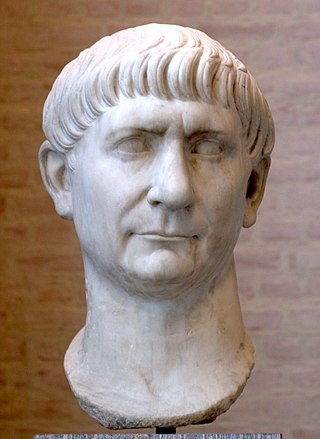
Trajan was a Roman emperor from AD 98 to 117, remembered as the second of the Five Good Emperors of the Nerva–Antonine dynasty. He was a philanthropic ruler and a successful soldier-emperor who presided over one of the greatest military expansions in Roman history, during which, by the time of his death, the Roman Empire reached its maximum territorial extent. He was given the title of Optimus by the Roman Senate.

The 20s decade ran from January 1, AD 20, to December 31, AD 29.

Roman commerce was a major sector of the Roman economy during the later generations of the Republic and throughout most of the imperial period. Fashions and trends in historiography and in popular culture have tended to neglect the economic basis of the empire in favor of the lingua franca of Latin and the exploits of the Roman legions. The language and the legions were supported by trade and were part of its backbone. The Romans were businessmen, and the longevity of their empire was caused by their commercial trade.

The art of Ancient Rome, and the territories of its Republic and later Empire, includes architecture, painting, sculpture and mosaic work. Luxury objects in metal-work, gem engraving, ivory carvings, and glass are sometimes considered to be minor forms of Roman art, although they were not considered as such at the time. Sculpture was perhaps considered as the highest form of art by Romans, but figure painting was also highly regarded. A very large body of sculpture has survived from about the 1st century BC onward, though very little from before, but very little painting remains, and probably nothing that a contemporary would have considered to be of the highest quality.

The Getae or Getai were a large nation who inhabited the regions to either side of the Lower Danube in what is today northern Bulgaria and southern Romania, throughout much of Classical Antiquity. Historians' main source of information about the Getae are Greek and Roman writers, at least some of whom believed that the Getae were closely related to the neighbouring Thracians to the south, and Dacians to the north. Modern scholars continue to debate the details of these relationships, including the question of whether these three peoples spoke the same language.

Berenice Troglodytica, also called Berenike or Baranis, is an ancient seaport of Egypt on the western shore of the Red Sea. It is situated about 825 km south of Suez, 260 km east of Aswan in Upper Egypt and 140 km south of Marsa Alam. It was founded in 275 BCE by Ptolemy II Philadelphus (285–246 BCE), who named it after his mother, Berenice I of Egypt.
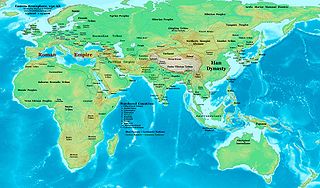
Between the Roman Empire and the Han dynasty, as well as between the later Eastern Roman Empire and various successive Chinese dynasties, there were contacts and flows of trade goods, information, and occasional travelers between. These empires inched progressively closer to each other in the course of the Roman expansion into ancient Western Asia and of the simultaneous Han military incursions into Central Asia. Mutual awareness remained low, and firm knowledge about each other was limited. Surviving records document only a few attempts at direct contact. Intermediate empires such as the Parthians and Kushans, seeking to maintain control over the lucrative silk trade, inhibited direct contact between the two ancient Eurasian powers. In 97 AD, the Chinese general Ban Chao tried to send his envoy Gan Ying to Rome, but Parthians dissuaded Gan from venturing beyond the Persian Gulf. Ancient Chinese historians recorded several alleged Roman emissaries to China. The first one on record, supposedly either from the Roman emperor Antoninus Pius or from his adopted son Marcus Aurelius, arrived in 166 AD. Others are recorded as arriving in 226 and 284 AD, followed by a long hiatus until the first recorded Byzantine embassy in 643 AD.

Several instances of interaction between Buddhism and the Roman world are documented by Classical and early Christian writers. Textual sources in the Tamil language, moreover, suggest the presence of Buddhism among some Roman citizens in the 2nd century AD.

The (Second) Latin War of 340–338 BC was a conflict between the Roman Republic and its neighbors, the Latin peoples of ancient Italy. It ended in the dissolution of the Latin League and incorporation of its territory into the Roman sphere of influence, with the Latins gaining partial rights and varying levels of citizenship.

The Emesenedynasty, also called the Sampsigeramids or the Sampsigerami or the House of Sampsigeramus, were a Roman client dynasty of Syrian priest-kings known to have ruled by 46 BC from Arethusa and later from Emesa, Syria, until between 72 and 78/79, or at the latest the reign of Emperor Antoninus Pius (138–161). Iamblichus, the famous Neoplatonist philosopher of the third century, was one of their descendants, as was empress Julia Domna, matriarch of the Severan dynasty.
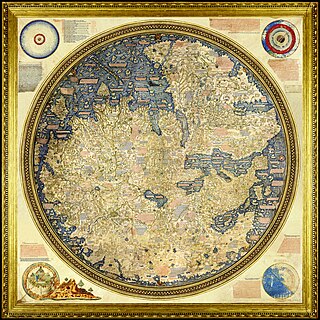
This is a chronology of the early European exploration of Asia.

Indo-Roman trade relations was trade between the Indian subcontinent and the Roman Empire in Europe and the Mediterranean Sea. Trade through the overland caravan routes via Asia Minor and the Middle East, though at a relative trickle compared to later times, preceded the southern trade route via the Red Sea which started around the beginning of the Common Era (CE) following the reign of Augustus and his conquest of Egypt in 30 BCE.

There are literary, archaeological, epigraphic and numismatic sources of ancient Tamil history. The foremost among these sources is the Sangam literature, generally dated to 5th century BCE to 3rd century CE. The poems in Sangam literature contain vivid descriptions of the different aspects of life and society in Tamilakam during this age; scholars agree that, for the most part, these are reliable accounts. Greek and Roman literature, around the dawn of the Christian era, give details of the maritime trade between Tamilakam and the Roman empire, including the names and locations of many ports on both coasts of the Tamil country.
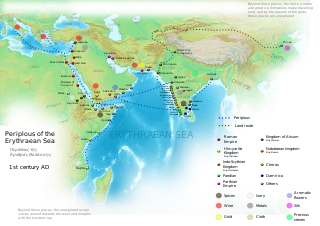
The first documented relations between Ancient India and Ancient Rome occurred during the reign of Augustus, the first Roman Emperor.
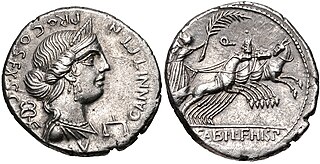
The gens Annia was a plebeian family at ancient Rome. Livy mentions a Lucius Annius, praetor of the Roman colony of Setia, in 340 BC, and other Annii are mentioned at Rome during this period. Members of this gens held various positions of authority from the time of the Second Punic War, and Titus Annius Luscus attained the consulship in 153 BC. In the second century AD, the Annii gained the Empire itself; Marcus Aurelius was descended from this family.
Kudiramalai is a cape and ancient port town on the west coast of Sri Lanka.

Sri Lanka–United Kingdom relations, or British-Sri Lankan relations, are foreign relations between Sri Lanka and the United Kingdom.

The gens Nonia was a plebeian family at ancient Rome. Its members first appear in history toward the end of the Republic. The first of the Nonii to obtain the consulship was Lucius Nonius Asprenas in 36 BC. From then until the end of the fourth century, they regularly held the highest offices of the Roman state.

The gens Saufeia was a minor plebeian family at ancient Rome. Members of this gens are first mentioned in the final century of the Republic, and from then to the early Empire their name occurs regularly in history, but none of them ever attained the consulship.
References
- 1 2 3 4 Weerakkody, D. P. M. "Sri Lanka and the Roman Empire" (PDF). Modern Sri Lanka Studies. II. Peradeniya University: 21. Archived from the original (PDF) on 2013-09-21.
- ↑ E. Sidebotham, Steven (1986). Roman Economic Policy in the Erythra Thalassa: 30 B.C.-A.D. 217, Part 217. BRILL. p. 72. ISBN 9004076441.
- 1 2 3 4 E. Sidebotham, Steven (3 Jan 2011). Berenike and the Ancient Maritime Spice Route. University of California Press. pp. 72 & 192–3. ISBN 9780520948389.
- ↑ Pliny HN 6.84.3 (Mayhoff) http://latin.packhum.org/loc/978/1/409/191-197#409
- ↑ Fergus Millar; Hannah Cotton; Guy MacLean Rogers (2004). Rome, the Greek World, and the East: Government, society, and culture in the Roman Empire. Univ of North Carolina Press. pp. 69–. ISBN 978-0-8078-5520-1.
- ↑ Tambyah, T. Isaac (1925). Psalms of a Saiva Saint. Asian Educational Services. p. 3. ISBN 9788120600256.
- ↑ Meredith, D. 1953. “Annius Plocamus: Two Inscriptions from the Berenice Road.” ‘’The Journal of Roman Studies’’ 43:38-40. Article DOI: 10.2307/297778